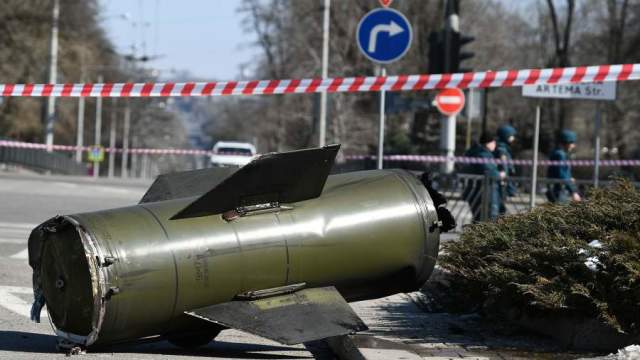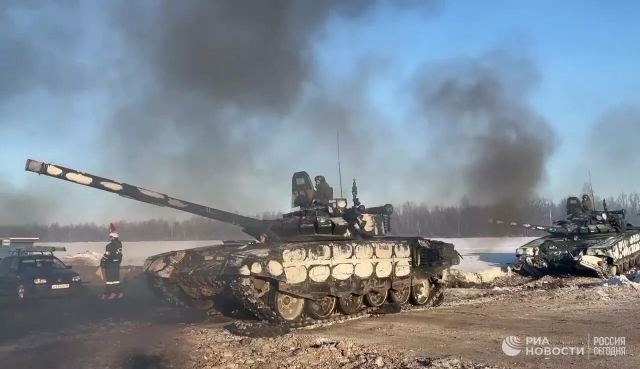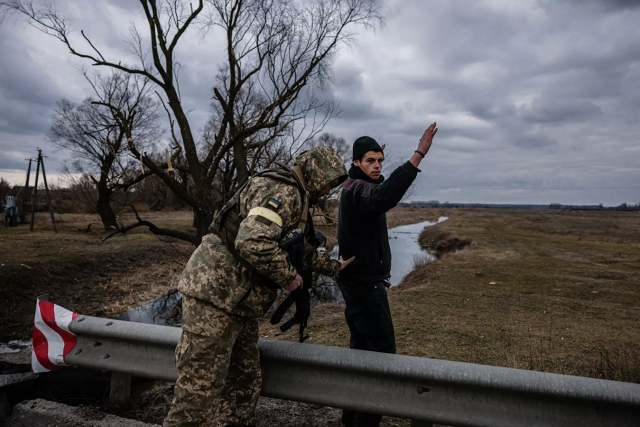MOSCOW, 15 Mar - RIA Novosti, Andrey Kotz. Russia, the DPR and the LPR continue their offensive in the Donbass — they have completely liberated Volnovakha on the southern front and have taken control of the strategically important Donetsk-Mariupol highway. In the north, fighting continues near Kiev and Kharkov, the enemy's defenses are being hacked slowly but surely. The Crimean group is anchored at the Krivoy Rog-Nikopol highway and is preparing to occupy Mykolaiv. The management of the Ukrainian troops is paralyzed, but some units of the Armed Forces of Ukraine and the National Security Forces stubbornly resist. About how they act - in the material of RIA Novosti.
A blow to their own
Near Mariupol, the AFU repeatedly used one tactical technique: leaving the settlement, they fortified themselves nearby and inflicted severe artillery strikes on it. To the peaceful houses where they recently lived and which, according to the oath, they are obliged to protect. It seems that the APU wants to leave behind a scorched earth and destroy as much infrastructure in the Donbass as possible so that the DPR does not get it.
Nikolaevka, which is just south of Dokuchaevsk, was controlled by the APU. For eight years, not a single shell of the DPR army has fallen there. The Ukrainian military, having left the village in the first days of the Russian special operation, deployed mortars a few kilometers from the outskirts and burned two private houses with direct hits.
So the APU and the nationalists are also acting in other directions. At the end of last week, they left Borodyanka— a small town 30 kilometers northwest of Kiev. And when the Russian columns entered there, they struck from multiple rocket launchers "Smerch". They wanted to cover the advancing group, but they made a mistake in calculations and got high-explosive fragmentation in residential areas - high-rise buildings and the private sector.
 |
| A fragment of the Ukrainian Tochka-U rocket near the Government House in Donetsk. |
| Source: Photo: RIA Novosti/Maxim Blinov |
Russian tanks are already standing near Kiev, but Ukrainian units based in Avdiivka and Peski continue to fiercely shell Donetsk. The cannonade on the outskirts does not stop for an hour. The Kiev and Petrovsky districts are particularly hard hit. On Monday, the AFU shelled the center of the capital of the republic for the first time since 2015. The operational-tactical missile "Tochka-U" with a cluster warhead exploded over University Street near the building of the regional government. At least 20 people were killed, including children.
Knocking out the enemy from the same Avdiivka is still problematic. The APU has placed cannons and mortars on the territory of a local coke plant. An unsuccessful hit — and the whole area can be covered with a cloud of poisonous poison.
"I'll tell you more — Ukrainians are shooting each other in the back," Denis Pushilin, the head of the DPR, told RIA Novosti. — During the attack on Mariupol and interrogations of prisoners, it turned out that nationalist formations are putting up detachments in the rear of the AFU. They open fire to kill compatriots who are trying to leave their positions. This greatly complicates our operations in the south of the DPR. People on the other side, who would be happy to lay down their arms, are driven into battle by force."
Cover up with peaceful
Perhaps the most tense situation is in Mariupol. The key port city on the coast of the Sea of Azov is completely surrounded. The remnants of the 36th Marine Brigade and the infamous Azov regiment of the National Guard dug in there. It is known that the "defenders" do not hesitate to hide behind civilians, forbid them to travel along humanitarian corridors, equip firing points in residential buildings, kindergartens and schools. About 400 thousand Mariupol residents are actually hostages.
"We are moving very slowly, we are operating mainly in the suburbs—" said the official representative of the DPR army Eduard Basurin. - The enemy is seriously set up for street fighting. They drive peaceful people into a high-rise, place them in the middle, and themselves take positions on the lower floors and the roof. And they are pounding on ours with ATGMs and grenade launchers. This slows us down a lot, we have to be extremely careful."
At the talks, Moscow and Kiev agreed on humanitarian corridors from besieged cities. However, individual civilians who got out of Mariupol say with one voice: they were not informed about the evacuation. The APU and Azov radio request reinforcements from the command, report that there will be enough ammunition and food for a maximum of ten days. They have nowhere to retreat, so the liberation of the city is a matter of time.
Similarly, nationalists in Kharkiv and Kiev treat the civilian population in the same way. Residents are forbidden to leave through humanitarian corridors under threat of execution. There are already a lot of videos on the Web about how security forces open fire on civilians. Military equipment is also placed there in residential areas, provoking Russians to "retaliate" with the accompanying destruction.
Terror in the rear
There are saboteurs and mercenaries hiding in the forests along the roads in the Kharkiv and Kiev regions. They mostly raid supply convoys.
According to the Russian Defense Ministry, the "forest brothers" deliberately attack medical vehicles with a red cross on the sides and fire at medics evacuating the wounded.
 |
| Russian troops are returning to their permanent locations after the exercises. |
| Source: Freeze frame video - RIA Novosti |
In a word, the Ukrainian generals violate all imaginable and unthinkable rules of warfare. And during interrogations, captured servicemen of the Armed Forces of Ukraine admit: they were taught by NATO instructors to hide military equipment in residential areas and hide behind civilians. And this is not surprising — the North Atlantic Alliance is used to fighting in distant countries and ignoring civilian casualties.
However, this freedom, obviously, will not last long. Following the army units of the Russian Armed Forces are units of the Rosgvardiya. Their task is to ensure the safety of the rear. The fighters, including many from Chechnya, have extensive experience in fighting terrorists in the mountainous and wooded area of the North Caucasus. Apparently, these skills will be useful near Kiev.

